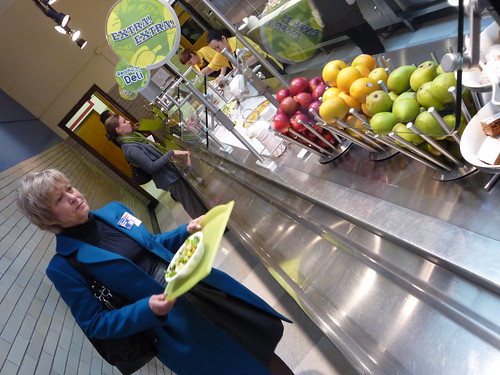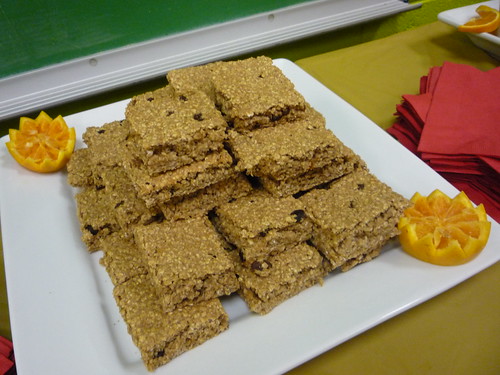
School nutrition folks in Chicago have been busy. Last May, Chicago Public Schools (CPS) and locally-based Healthy Schools Campaign launched the city’s Go for the Gold campaign. The effort seeks to have 100 city schools qualify for USDA’s HealthierUS Challenge gold award. As part of that announcement, CPS revised its food menus and made other changes, as well.
Last month, I joined USDA’s Audrey Rowe and Christie Vilsack, wife of USDA Secretary Tom Vilsack, to check out some of the interesting things nutrition staff have done in some of the Second City’s schools.
Our first stop in what turned out to be an action-packed day was McPherson Elementary School on the northwest side. According to CPS staff, McPherson’s students are more alert and better prepared to learn because they receive a breakfast at school. While visiting this beautiful, historic school, Audrey and Christie chatted with children enjoying breakfast in the classroom and then moved to the brightly painted cafeteria.
In the cafeteria, we found a number of healthy foods, including nutritious cereal bars made with USDA commodity foods. Audrey and Christie held an impromptu roundtable with the school principal, CPS nutrition services staff, and local leaders involved with farm to school and healthy school efforts.
It was also pretty cool to learn that a relationship between nearby FamilyFarmed.org and CPS’ food service vendor will result in around $2 million of school food being sourced from local Midwest farms.
From there, it was a quick trip to Von Steuben High School and meetings with the school chef and Healthy Schools Campaign sponsors, including Applegate Farms. At Von Steuben, fried foods were eliminated, a salad station was added and more meals are now prepared from scratch.
While Christie sampled a healthy, freshly-tossed salad, I tagged along with Audrey who chatted with Von Steuben students in the cafeteria about the recent changes to their school meals. Everyone we talked to believed that the healthier changes resulted in tastier and more diverse offerings.
From cafeteria staff who prepare the meals to the high schoolers that eat them, the recent changes have been widely embraced. It’s often said that change is good. And in the case of Chicago’s schools, it’s healthy, too!



